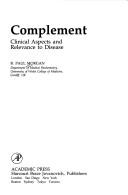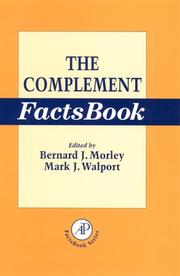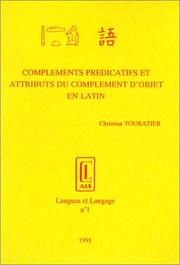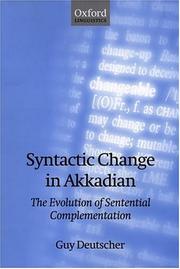| Listing 1 - 10 of 72 | << page >> |
Sort by
|

ISBN: 0125069553 Year: 1990 Publisher: London : Academic Press,
Abstract | Keywords | Export | Availability | Bookmark
 Loading...
Loading...Choose an application
- Reference Manager
- EndNote
- RefWorks (Direct export to RefWorks)
Book
Abstract | Keywords | Export | Availability | Bookmark
 Loading...
Loading...Choose an application
- Reference Manager
- EndNote
- RefWorks (Direct export to RefWorks)
Complement fixation --- Diagnosis --- Glanders
Book
Year: 1921 Publisher: Paris : A. Maloine et fils, éditeurs,
Abstract | Keywords | Export | Availability | Bookmark
 Loading...
Loading...Choose an application
- Reference Manager
- EndNote
- RefWorks (Direct export to RefWorks)
Book
ISBN: 1282574000 9786612574009 1441646981 1413578322 9781441646989 9788479082970 8479082976 9781413578324 9781282574007 Year: 1996 Publisher: [Alicante] : Universidad de Alicante, 1996:
Abstract | Keywords | Export | Availability | Bookmark
 Loading...
Loading...Choose an application
- Reference Manager
- EndNote
- RefWorks (Direct export to RefWorks)
Español --- Spanish language --- Complemento. --- Complement. --- Syntax. --- Semantics. --- Lexicology. Semantics --- Grammar --- Syntax --- Complement --- Spanish language - Syntax --- Spanish language - Complement

ISBN: 1281049921 9786611049928 0080529550 1435610210 0127333606 Year: 2000 Publisher: San Diego, CA ; London : Academic,
Abstract | Keywords | Export | Availability | Bookmark
 Loading...
Loading...Choose an application
- Reference Manager
- EndNote
- RefWorks (Direct export to RefWorks)
The Complement FactsBook contains entries on all components of the Complement System, including C1q and Lectins, C3 Family, Serine Proteases, Serum Regulators of Complement Activation, Cell Surface Proteins, and Terminal Pathway Proteins. Domain Structure diagrams are incorporated to clearly illustrate the relationships between all the complement proteins, both within families and between families. The FactsBook also includes the cDNA sequences, marked with intron/exon boundaries, which will facilitate genetic studies.Key Features* Includes the cDNA sequences, marked with in
Complement (Immunology) --- Immunology. --- Immunobiology --- Life sciences --- Serology --- Alexin --- Complements (Immunity) --- Blood proteins --- C-reactive protein --- Complement --- Complement activation --- Receptors, cell surface --- Serine proteinases --- Complement (Immunology).
Book
Year: 1964 Volume: 34 Publisher: Paris : Presses universitaires de France,
Abstract | Keywords | Export | Availability | Bookmark
 Loading...
Loading...Choose an application
- Reference Manager
- EndNote
- RefWorks (Direct export to RefWorks)
Russian language --- Russe (Langue) --- Complement --- Complément
Book
Abstract | Keywords | Export | Availability | Bookmark
 Loading...
Loading...Choose an application
- Reference Manager
- EndNote
- RefWorks (Direct export to RefWorks)
Antimicrobial peptides and complement are distinct components of the innate immune defence. While antimicrobial peptides, after cleavage of a preproprotein, have the ability to insert directly in non host membranes, complement requires a sequential enzymatic activation in the fluid phase in order to produce a transmembrane membrane attack complex. Its insertion is controlled by membrane bound regulators. Deficiencies are described for both effectors and relate to increased susceptibility of infection. In addition, however, antimicrobial peptides and complement each influence the activity of inflammatory cells as recent data in the respective research areas shows. This series of articles draws together for the entities of antimicrobial peptides and complement a balance of contributions in the areas of evolution, roles, functions and preclinical applications. By comparing and contrasting antimicrobial peptides and complement, greater cross-disciplinary appreciation will be derived for their individual and overlapping spectra of activity, circumstances of activation and their general ability to more completely inform the inflammatory and cellular response.
Immunology. --- Peptide antibiotics. --- Complement System Proteins --- immunology. --- Disease --- regulation --- Health --- system-specific --- complement --- antimicrobial peptides

ISBN: 2853992535 9782853992534 Year: 1991 Volume: 1 Publisher: Aix-en-Provence: Université de Provence,
Abstract | Keywords | Export | Availability | Bookmark
 Loading...
Loading...Choose an application
- Reference Manager
- EndNote
- RefWorks (Direct export to RefWorks)
Latin language --- Latin (Langue) --- Complement --- Syntax --- Complément --- Syntaxe --- Complement. --- Syntax. --- -Latin language --- -Classical languages --- Italic languages and dialects --- Classical philology --- Latin philology --- -Complement --- Complément --- Classical languages --- Latin language - Complement. --- Latin language - Syntax.

ISBN: 9780198299882 9780199532223 Year: 2007 Publisher: Oxford Oxford University Press
Abstract | Keywords | Export | Availability | Bookmark
 Loading...
Loading...Choose an application
- Reference Manager
- EndNote
- RefWorks (Direct export to RefWorks)
Grammar --- Semitic languages --- Akkadian language --- Akkadien (Langue) --- Grammar, Historical --- Complement --- Syntax --- Grammaire historique --- Complément --- Syntaxe --- Complément --- Grammar, Historical. --- Complement. --- Syntax.
Book
Year: 1968 Volume: 49 Publisher: Cambridge, Mass. : M.I.T. Press
Abstract | Keywords | Export | Availability | Bookmark
 Loading...
Loading...Choose an application
- Reference Manager
- EndNote
- RefWorks (Direct export to RefWorks)
Latin language --- Latin (Langue) --- Syntax --- Complement --- Syntaxe --- Complément
| Listing 1 - 10 of 72 | << page >> |
Sort by
|

 Search
Search Feedback
Feedback About UniCat
About UniCat  Help
Help News
News